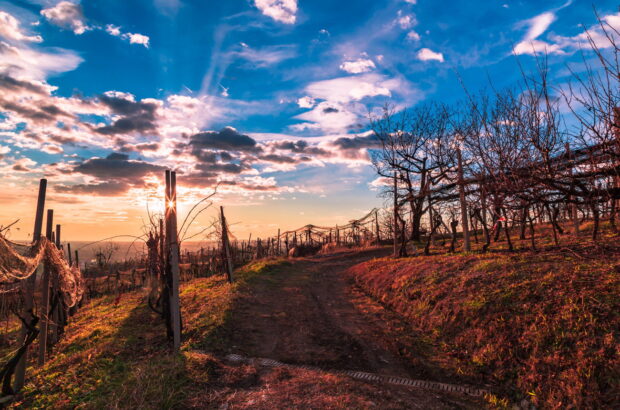In addition to AMW’s recently launched map and tightening of the source area for AMW-certified fruit, it has updated its yield requirements with a minimum sugar ripeness level for members, whose grapes – other than those destined for low-alcohol products – must now exceed 18 Brix at harvest.
It has also appointed its first CEO, Michael Wentworth, to drive membership and advocacy goals and to create greater public awareness of the group. AMW chair, John Buchanan, said: ‘Up until this point, AMW’s growth has been rather organic. We’ve made significant in-roads with wine buyers and enthusiasts over the past few years and it is critical that we capitalise on this momentum.’
Established in 2018 due to concerns with the rapid industry growth that brought with it an increase of bulk wine shipments and secondary non-winery aligned brands, AMW aims instead to promote the region’s diversity and create guardrails to prevent ‘the dilution of brand value of Marlborough that is occurring because of the dilution of the product itself’.
According to the International Organisation of Vine and Wine (OIV), New Zealand’s bulk wine exports comprised 41% of the total volume in 2023, the overwhelming majority of which is Marlborough Sauvignon Blanc.
In addition to the parameters above, AMW-certified wines must be 100% Marlborough fruit, be bottled in New Zealand, certified by Sustainable Winegrowing New Zealand, BioGro NZ or an equivalent, and have been approved by an independent panel of local winemakers.
There are now 54 members of varying sizes who have signed an enforceable code of conduct and who use the AMW logo on their labels and marketing. At its inception, only Sauvignon Blanc wines were permitted but in 2022 certification was expanded to all varieties grown in the region, with Pinot Noir, Chardonnay and aromatic wines now bearing the AMW mark.
‘Ultimately, wines that are certified under the AMW regulations offer drinkers an authentic, quality expression of Marlborough. Sadly, with bulk wine shipments and expansion of vineyards into marginal areas, that’s not always the case, so by elevating the profile of AMW we give wine drinkers a choice,’ said Wentworth.
New Zealand’s Geographical Indications (GI) Act was passed into law at the end of 2016, permitting the registration and global protection of place names but without further restrictions such as varieties or production methods, and only 85% of fruit needs to come from a particular GI for it to be on the label. While such flexibility is largely welcomed in a young country like New Zealand, whose regions are still in the process of refining what works best for them, the flipside is that it provides little official encouragement towards or benchmarking of quality expectations.
The Marlborough GI, as with most others in the country, follows geo-political boundaries rather than wine-growing ones. AMW’s map delineates the wine-growing areas and has a near overlap with where the region’s rainfall sits below 900mm, an especially important variable for a thin-skinned disease-susceptible variety like Sauvignon Blanc.

© Marlborough Wine Map Collective 2023. All rights reserved
AMW’s recent agreement with members to stay within its map’s boundaries rather than those of the wider GI’s is anchored in the view of many producers that Marlborough is at its planted limits for quality wine production. Wentworth said: ‘As quality land has become scarce within Marlborough, we are increasingly seeing expansion into marginal areas, areas with very high rainfall. We are not looking to limit growers ability to grow where they want, taking on all the associated risk, all we are seeking is a more realistic border to reflect quality winemaking, and for those that make the choice to grow outside the region, not to be able to utilise “Marlborough” on the label.’
AMW regards its advocacy as a driver of change, and pressing New Zealand Winegrowers (NZW) for better regulation will be one of Wentworth’s key tasks.
‘NZW last year introduced a voluntary code of practice for bulk wine shipments, seeking buy-in from producers – that is still under review,’ he said. ‘We believe the industry needs tighter regulations in place, to take some real leadership and implement compulsory standards. It’s the only way to ensure consistency across the industry and maintain quality standards. It’s not about impacting people’s livelihoods, it’s protecting our hard-earned reputation and giving wine drinkers confidence that they are purchasing a quality product, reflective of the region.’
With the dominance Marlborough Sauvignon Blanc has in New Zealand’s industry, it’s a concern many share, but lobbying for the tightening of GI regulations and national minimum Brix standards will likely be a long game.
NZW thus far seem happier for an ad hoc approach to appellatory regulations to occur. Charlotte Read, general manager of brand for NZW, said: ‘We applaud the efforts of any collaboration of members that combine resources to amplify a strong premium New Zealand wine message. One of the enablers of the New Zealand wine industry’s rapid rise to global prominence has been our flexible regulatory system. At the current time we do not believe there is an industry consensus for a change to existing settings, but, of course, private initiatives are free to innovate as they so choose.’
So far, AMW is the only entity to pursue a stricter approach. Central Otago, where a significant proportion of fruit and wine moves out of the region to be processed in other wineries or bottling facilities, is more focused on subregional GIs, with Bannockburn registered in February 2022 and Bendigo likely to follow suit. While Central Otago has largely maintained its premium pricing and reputation, it’s an area on which its producers and regional body Central Otago Winegrowers Association (COWA) continue to keep a close eye.
Wentworth believes AMW won’t be going it alone for long. ‘There is a genuine interest in what we are doing from other regions within the country, and I believe it won’t be long before we see other regional groups like ours emerge throughout New Zealand. This now gives the wine drinker a genuine choice – we just need to amplify our message and encourage people to look for the AMW logo as their guarantee of quality and authenticity.’







